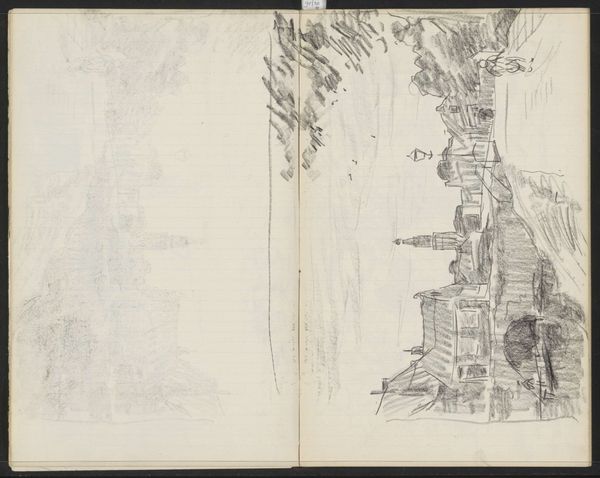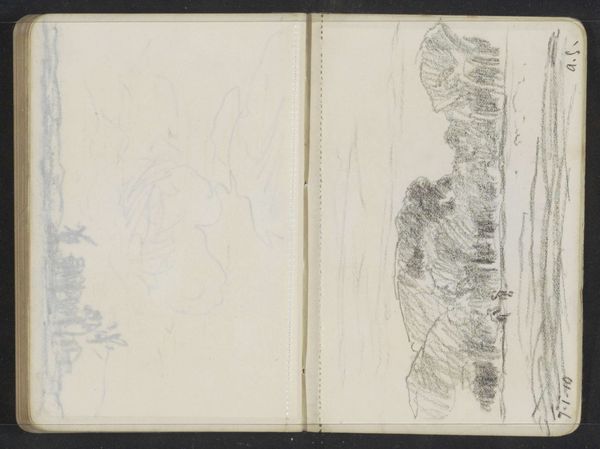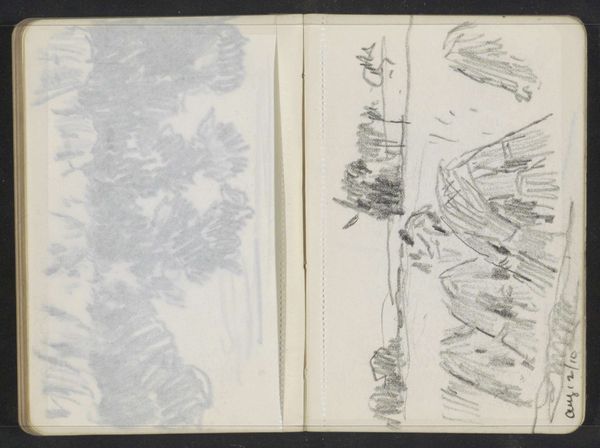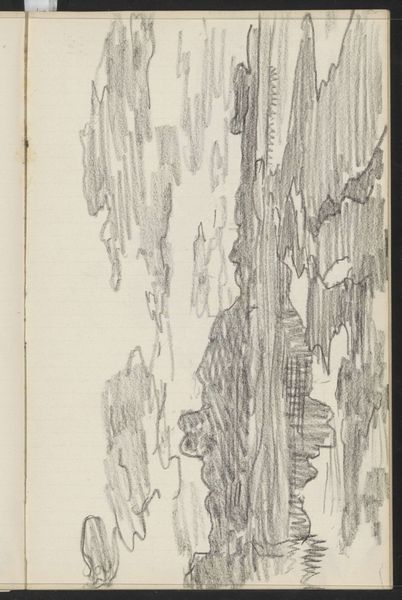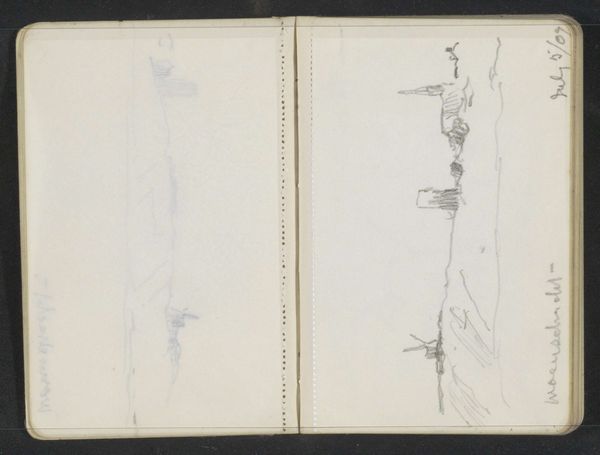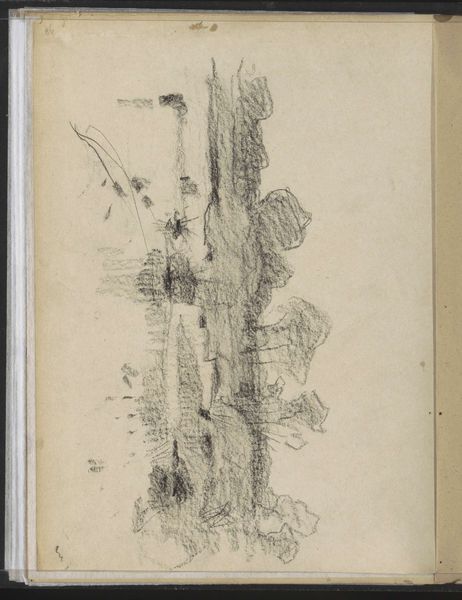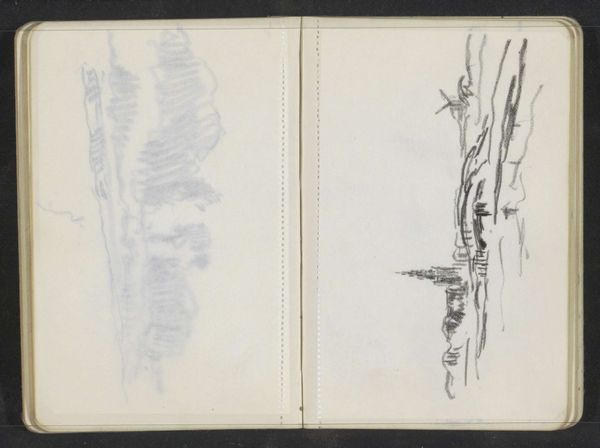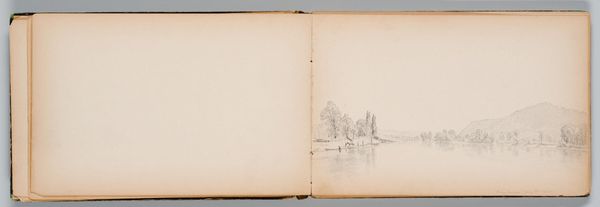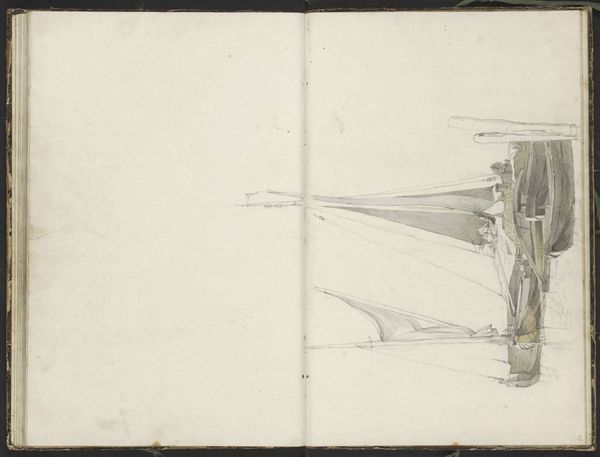
Straat langs een kanaal met zicht op de Zuiderkerk in Enkhuizen 1900 - 1931
0:00
0:00
Copyright: Rijks Museum: Open Domain
Curator: Welcome. Today we're looking at Willem Bastiaan Tholen's "Straat langs een kanaal met zicht op de Zuiderkerk in Enkhuizen," dating from between 1900 and 1931. It’s currently held at the Rijksmuseum and it's rendered with pencil and pen in the style of impressionism. Editor: My first impression is of quiet contemplation. There's a sense of intimacy to the scene, heightened by the medium—a sketchbook. The open pages also contribute a feeling of incompleteness, inviting personal interpretation. Curator: Indeed, the use of line is quite deliberate. Tholen captures the scene's essence with an economy of means, allowing the viewer to complete the image mentally. The vertical lines of the buildings and the spire of the Zuiderkerk establish a strong structural framework. Editor: The Zuiderkerk, a recurring motif, dominates the skyline. It carries significance. Churches act as anchors of community, belief, and tradition within the urban landscape. Notice how the canal itself becomes a mirror reflecting, perhaps distorting, the solidity of these social structures. Curator: Observe also the interplay of light and shadow created by the rapid strokes of the pencil and pen. Tholen suggests depth and volume using a range of marks. See how the density of the lines varies to differentiate forms and establish spatial relationships. Editor: It’s also very evocative of memory. Sketchbooks carry personal associations, secrets and fleeting moments. This landscape, therefore, may not be a completely accurate portrayal, but rather colored with the artist's personal experience and perspective. Curator: Exactly. While this work clearly adheres to certain structural principles of landscape art, Tholen focuses on capturing a subjective experience—the immediacy of observing a particular place at a particular moment. Editor: In summary, "Straat langs een kanaal met zicht op de Zuiderkerk in Enkhuizen" transcends mere topographical depiction to offer a glimpse into the artist’s subjective experience and a reflection of cultural stability. Curator: A brilliant analysis that underscores how careful consideration of line, composition, and context enrich our appreciation. Editor: It highlights that even a simple sketch holds many interpretive possibilities!
Comments
No comments
Be the first to comment and join the conversation on the ultimate creative platform.
